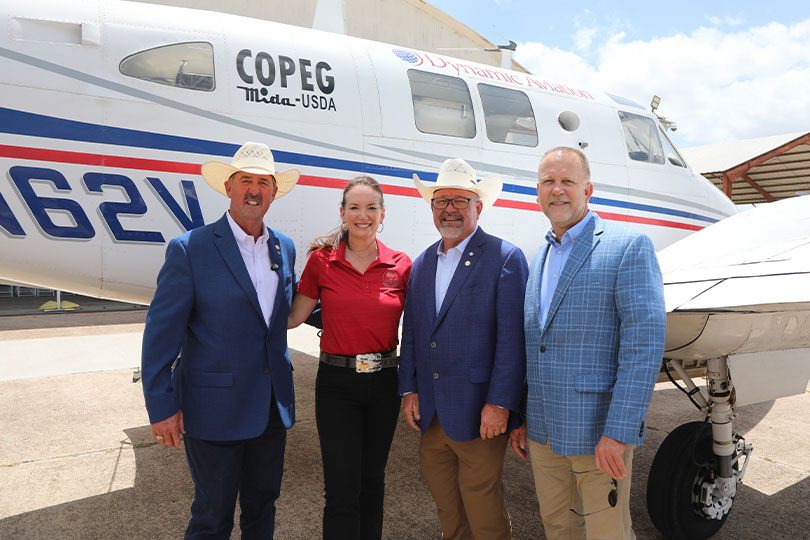By Julie Tomascik
Editor
A critical line of defense against the New World screwworm is coming soon to the Rio Grande Valley.
The U.S. Department of Agriculture (USDA) last month announced plans to retrofit an existing facility at Moore Air Base in Mission for the production and dispersal of sterile flies to combat the New World screwworm.
The parasitic fly poses a significant threat to livestock, wildlife, pets and, in rare cases, people.
The new domestic facility is part of USDA’s broader strategy to slow the screwworm’s northward advance through Mexico and prevent a reintroduction in the U.S., where the pest was eradicated in the 1960s.
Texas Farm Bureau commended USDA’s action, calling the facility a crucial investment in livestock health and food security.
“Texas Farm Bureau made the establishment of a domestic sterile insect facility one of our highest priorities,” TFB President Russell Boening said. “This investment is a critical step in protecting Texas livestock, wildlife and our food supply from the devastating threat of the New World screwworm.”
USDA also announced its five-pronged plan. It includes strengthened surveillance and control efforts in Mexico, increased border protections, readiness enhancements across the U.S. and continued innovation in screwworm detection and treatment.
“The United States has defeated NWS before, and we will do it again,” U.S. Secretary of Agriculture Brooke Rollins said. “We do not take lightly the threat NWS poses to our livestock industry, our economy and our food supply chain.
The retrofitted facility in Texas will help expand the production and delivery of sterile male flies—an approach known as sterile insect technique. It works by overwhelming wild populations with sterile males, gradually collapsing the pest’s ability to reproduce. The method was instrumental in the original U.S. eradication of NWS and has remained a core component of USDA’s international containment strategy.
Currently, the U.S. relies on a facility in Panama, operated jointly with the Panamanian government, to produce about 100 million sterile flies each week. USDA estimates future eradication efforts may require 400 to 500 million flies weekly, underscoring the need for increased domestic capacity.
“We’re grateful to the Congressional leaders who have championed this effort and to USDA for its commitment to proactive, long-term solutions,” Boening said. “We look forward to continued collaboration to ensure our producers, rural communities and consumers are protected from this threat.”
The Moore Air Base was formerly used as a sterile fly facility in the 1960s and 1970s, according to USDA. The plant produced up to 200 million flies per week during those operations.
Rollins’ announcement comes one week after she testified before the House Ag Committee where she told Congressional lawmakers that plans would soon be announced regarding USDA’s efforts to combat the pest.
The Texas facility is expected to begin operations within the next year, with expanded production capacity to follow.
Boening, and fellow TFB board members Brian Jones and Warren Cude, were in attendance at the press conference when Rollins announced USDA’s plans.
To learn more about the New World screwworm and USDA’s response, visit txfb.us/screwworm.


Leave A Comment